I am trying to generate 2D line plots at different angles or slices of a matplotlib contourf plot.
As an example from the matplotlib contourf demo example below
import numpy as np
import matplotlib.pyplot as plt
origin = 'lower'
delta = 0.025
x = y = np.arange(-3.0, 3.01, delta)
X, Y = np.meshgrid(x, y)
Z1 = np.exp(-X**2 - Y**2)
Z2 = np.exp(-(X - 1)**2 - (Y - 1)**2)
Z = (Z1 - Z2) * 2
nr, nc = Z.shape
fig1, ax2 = plt.subplots(constrained_layout=True)
CS = ax2.contourf(X, Y, Z, 10, cmap=plt.cm.viridis, origin=origin,extend='both')
ax2.set_title('Random Plot')
ax2.set_xlabel('X Axis')
ax2.set_ylabel('Y Axis')
cbar = fig1.colorbar(CS)
Ideally, I want to generate lines at different angles (30,45,60 degrees) across the map (starting at any arbitrary point till the end of existing array) and then plot the Z variations across that line.
I think a simpler problem in principle would be, lines from (X2,Y2) to (X1,Y1) and plot the Z variation for the given contour (which is already interpolated data).
As an example, original problem would be line from (-3,-3) at angle 45 deg across. Analogous problem would be lets say a line from (-3,-3) to (3,3) and plot the Z variation at different locations on that line.

